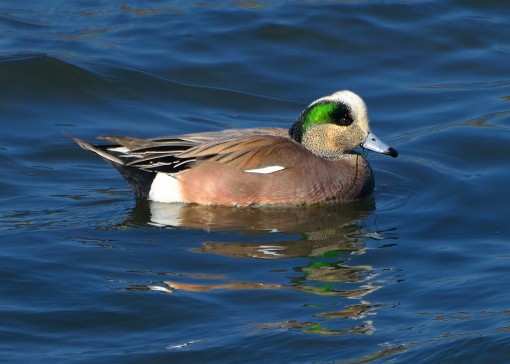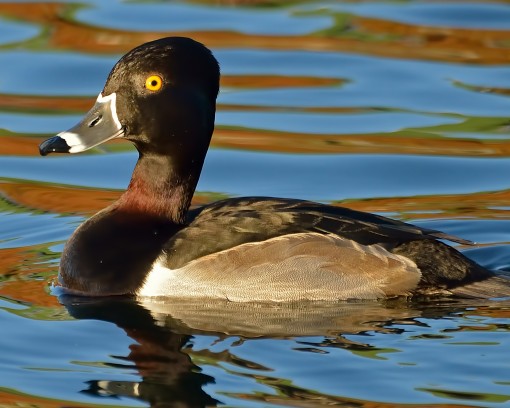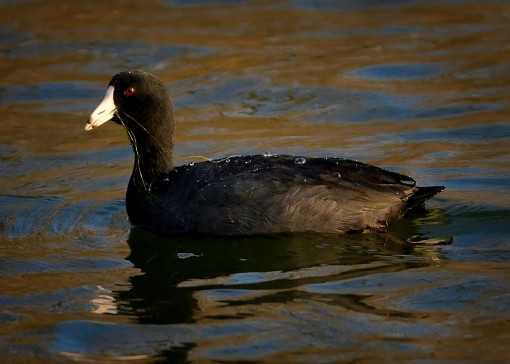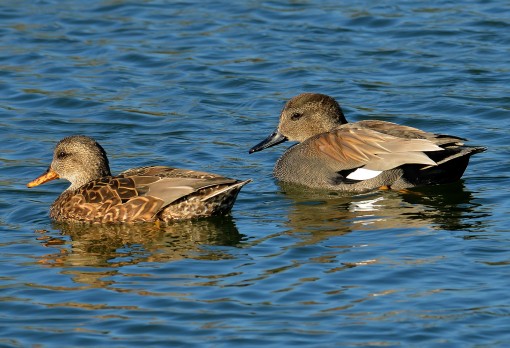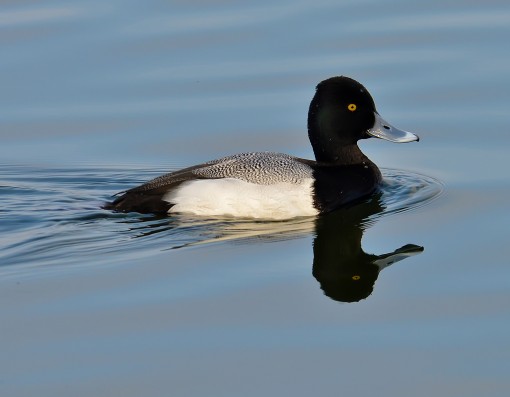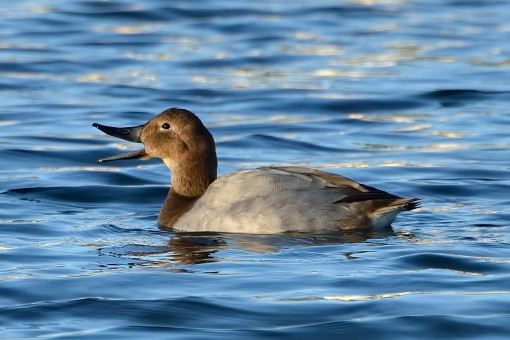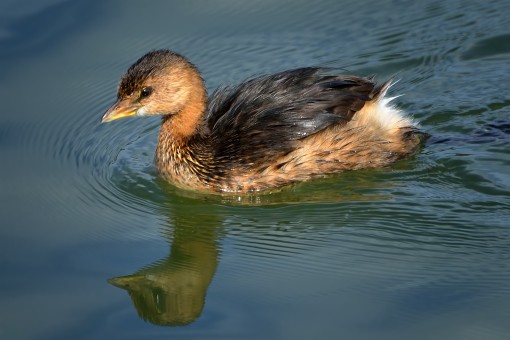Ducks in the Desert
December 31, 2014 | By Shoal Creek Conservancy
This blog post was written by Ted Lee Eubanks. To learn more about the author, please visit this site.
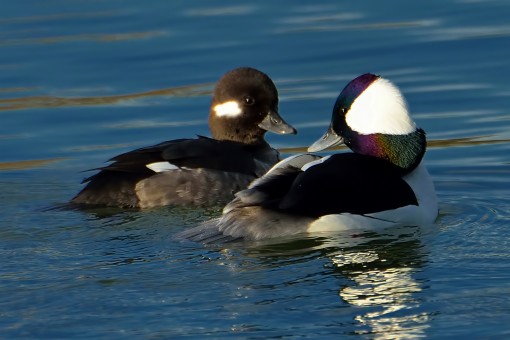
If it looks like a duck, and quacks like a duck, we have at least to consider the possibility that we have a small aquatic bird of the family anatidae on our hands…Douglas Adams
Shoal Creek is a waterfowl wasteland. The creek is too narrow, and the water is either nonexistent or too shallow. Shoal Creek has never been much different from a duck’s perspective. Wood ducks do nest in the cavities in old trees along the creek, but otherwise Shoal Creek is a duck desert.
The Colorado River, before being dammed in the New Deal, couldn’t have been very hospitable to ducks, either. The Highland Dams changed the river to a series of lakes. Our once ephemeral river is now a series of reservoirs, and the ducks have responded.
To see ducks in or near Shoal Creek, you need to travel either to the headwaters or to its mouth. Lake Fail, north of US 183, is a stormwater retention pond that attracts a surprising variety of ducks. I regularly see American wigeon, gadwall, lesser scaup, canvasback, bufflehead, northern shoveler, and ring-necked duck at this small pond during the winter season.
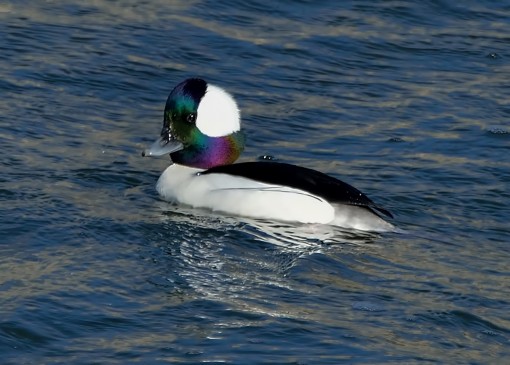
Lady Bird Lake is the main attraction for our local wintering waterfowl, and many of these ducks and duck-like birds (coots, cormorants, grebes) will edge their way up Shoal Creek. Or, they did, once. With all of the construction along the southern end of Shoal Creek (virtually every square inch below West 5th), the ducks have decided to stick to the deeper waters of Lady Bird Lake. Yet, from the hike-and-bike trail at the mouth of Shoal Creek, you can still see a variety of divers and dabblers along the edge of the lake.
Among my favorites is the bufflehead (Bucephala albeola). The bufflehead is the smallest of the divers, ducks that dive below the surface of the water to feed. Buffleheads winter in the southern US and in Mexico, and nest in the boreal forests of Canada and Alaska. This tiny duck takes advantage of cavities first excavated by flickers and other woodpeckers. Buffleheads pair for life, one of the few ducks that is monogamous.
The name bufflehead is a reference to the shape of the drake’s head. To early settlers, the shape reminded them of a buffalo. I love the iridescent colors that only appear when the sunlight strikes the drake’s head at just the right angle.
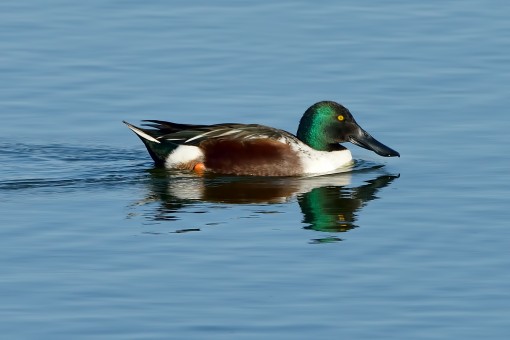
Dabbling ducks, known as dabblers, are unable to dive and therefore dabble for their food at the water’s surface. Ducks such as the gadwall, northern shoveler, and northern pintail are examples of dabblers. The spread of hydrilla in Austin lakes has benefited dabblers and duck-like birds such as the American coot that feed only on aquatic vegetation. These birds are one of the ways that this noxious weed is spread, since pieces of hydrilla can cling to them as they fly from pond to pond.
Texas has never been particularly hospitable to ducks away from its coast. There are few natural lakes in Texas, and by some accounts, there are none. Even Caddo Lake, usually touted as our one natural lake, has been dammed and enlarged. Now, man has built countless reserviors, ponds, and cattle tanks in our state, and ducks concentrate in many areas well away from the coast.
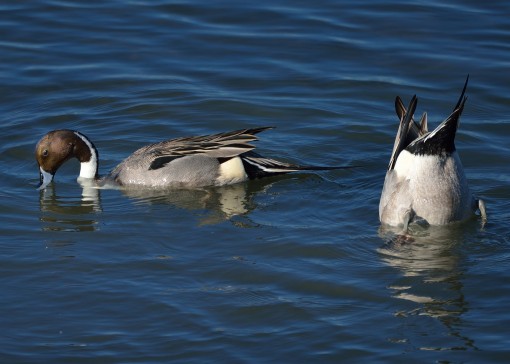
Austin’s white rocks and cedar trees aren’t duck habitat, either. We are more desert than pond. Yet, the waters impounded by the Highland Dams are examples of lakes that, although artificial, are perfectly hospitable for ducks and other waterbirds.
As for Shoal Creek, my recommendation is that you visit Lake Fail. Take Mopac north to the first exit north of US 183. Exit, and stay on the feeder until you reach the first entrance to the Arbor Walk shopping center. Park behind the Firestone that is at the southern edge of the shopping center. The parking area overlooks the lake.
